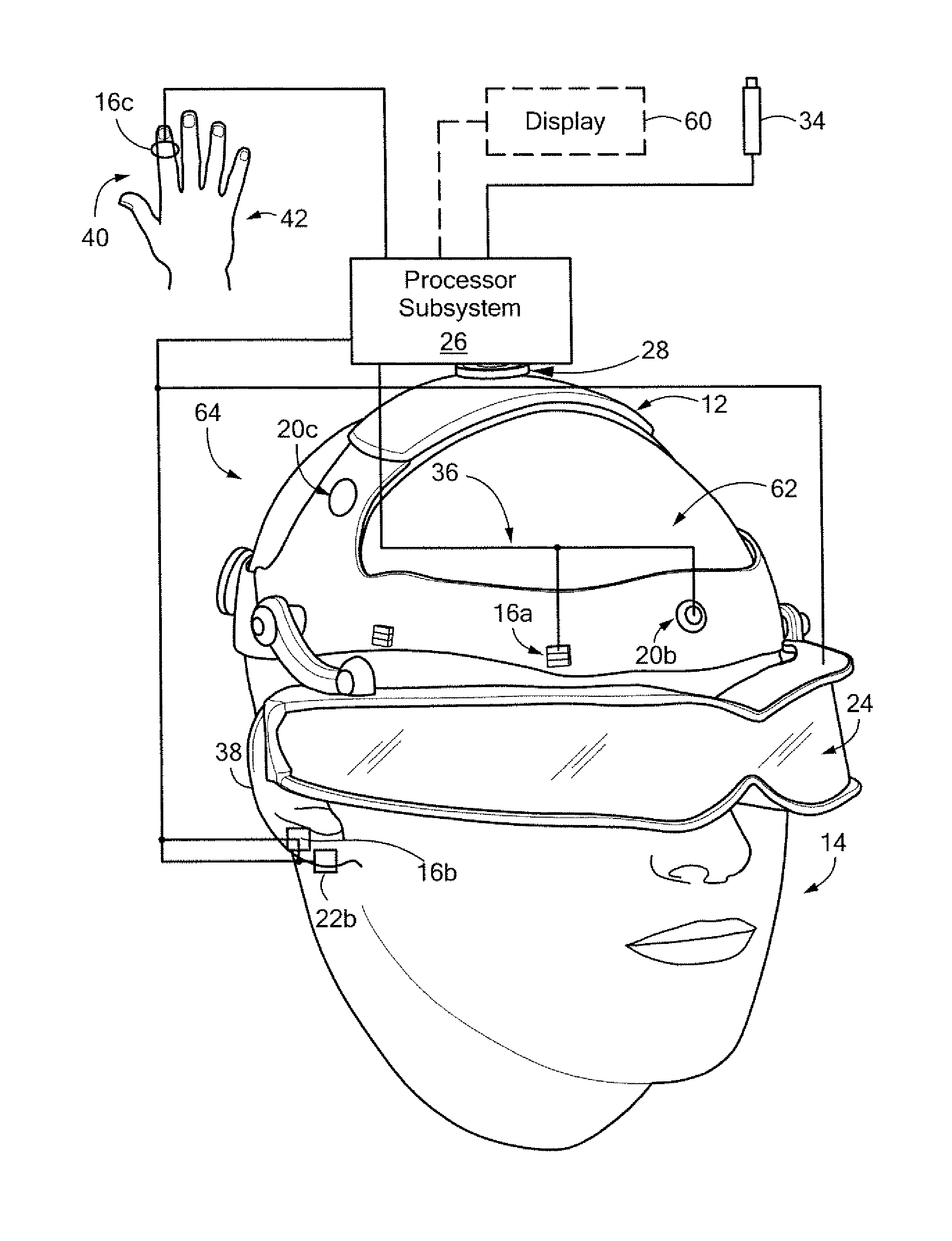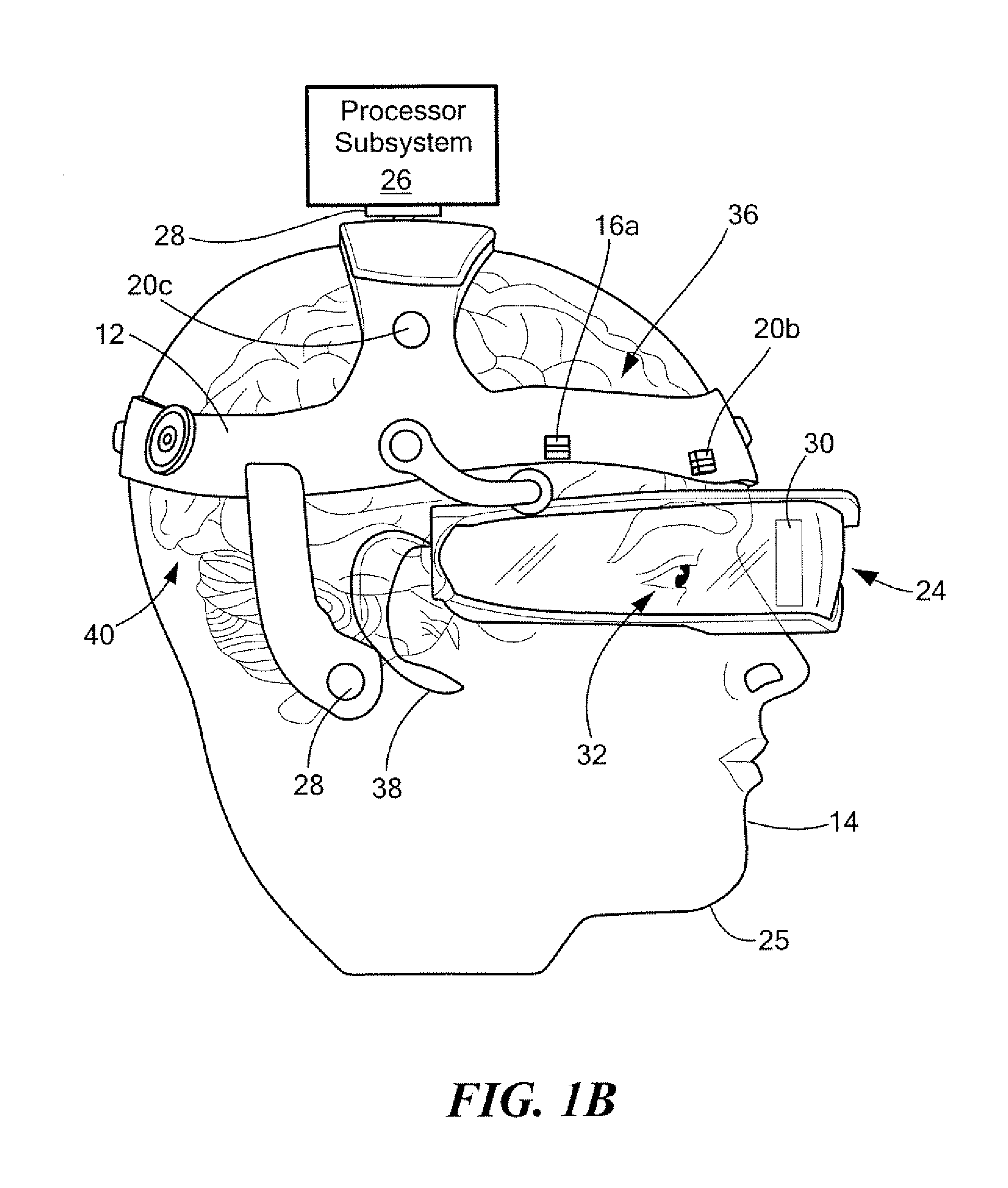Head-mounted neurological assessment system
a neurological assessment and head-mounted technology, applied in the field of head-mounted neurological assessment systems, can solve the problems of inability to image every soldier or athlete with conventional systems, insidious effects on the soldier or athlete, and the risk of tbi in active civilians, especially those participating in competitive sports
- Summary
- Abstract
- Description
- Claims
- Application Information
AI Technical Summary
Benefits of technology
Problems solved by technology
Method used
Image
Examples
Embodiment Construction
[0031]Aside from the preferred embodiment or embodiments disclosed below, this invention is capable of other embodiments and of being practiced or being carried out in various ways. Thus, it is to be understood that the invention is not limited in its application to the details of construction and the arrangements of components set forth in the following description or illustrated in the drawings. If only one embodiment is described herein, the claims hereof are not to be limited to that embodiment. Moreover, the claims hereof are not to be read restrictively unless there is clear and convincing evidence manifesting a certain exclusion, restriction, or disclaimer.
[0032]FIGS. 1A-1C show one embodiment of head-mounted neurological assessment system 10 of this invention. System 10 includes head-mounted frame 12 adapted to fit on head 14 of the user as shown. System 10 also includes one or more sensors configured to measure parameters associated with an injured brain and / or vestibular s...
PUM
 Login to View More
Login to View More Abstract
Description
Claims
Application Information
 Login to View More
Login to View More - R&D
- Intellectual Property
- Life Sciences
- Materials
- Tech Scout
- Unparalleled Data Quality
- Higher Quality Content
- 60% Fewer Hallucinations
Browse by: Latest US Patents, China's latest patents, Technical Efficacy Thesaurus, Application Domain, Technology Topic, Popular Technical Reports.
© 2025 PatSnap. All rights reserved.Legal|Privacy policy|Modern Slavery Act Transparency Statement|Sitemap|About US| Contact US: help@patsnap.com



